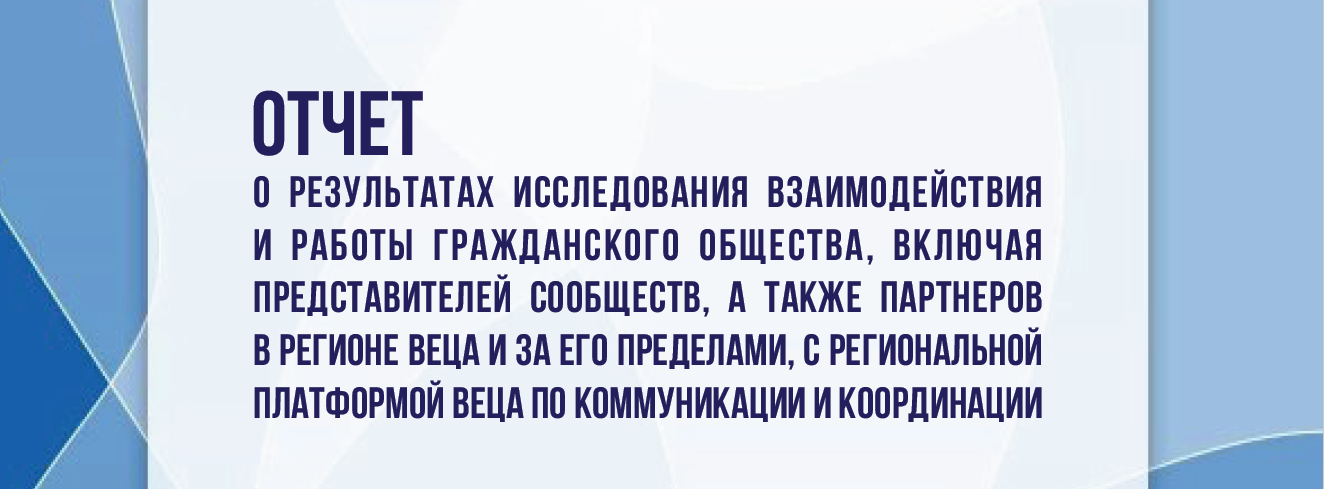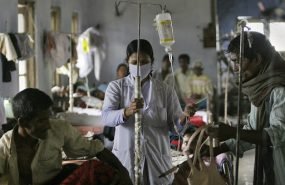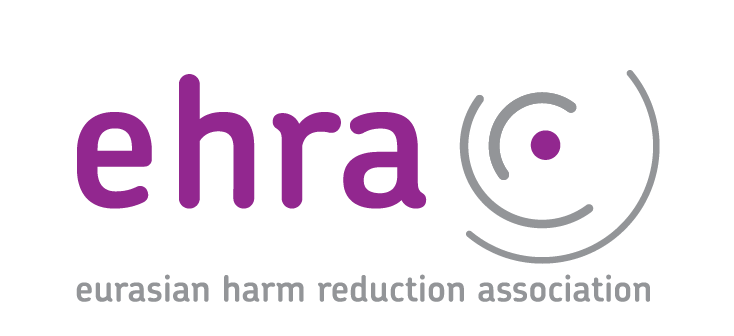Global Fund grant to Ukraine finds treatment success for multidrug-resistant TB with two-pronged approach
- 27.08.2018 08:31
- Post Views: 966
According to the WHO, Ukraine remains a country with a high TB burden, and in 2014 it became one of the five countries with the highest burdens of multidrug-resistant tuberculosis (MDR TB) in the world. The TB epidemic in Ukraine is marked by the spread of multidrug-resistant and extensively drug-resistant tuberculosis (XDR TB), relatively high MDR TB mortality and one of the lowest TB treatment success rates in the region of Eastern Europe and Central Asia – 72% in new TB cases and 38,6% in patients with MDR TB (WHO, 2016).
Currently the Global Fund to Fight AIDS, Tuberculosis and Malaria (the Global Fund) is supporting the implementation of programs to fight tuberculosis in Ukraine within a new country HIV/TB grant for 2018-2020, as well as through catalytic funding. The current program, which started this year, is being based on the previous three-year project, “Investing for Impact against Tuberculosis and HIV”, which had been implemented in Ukraine in 2015-2017 and was completed, with success, at the end of last year.
One of the three key implementers of this project was the Alliance for Public Health (the Alliance), which was responsible for a number of program components, in particular for providing medical and social support to ensure adherence to MDR-TB treatment. Implementation of this latter component achieved high success rates (up to 80%).
Key success factors and outcomes
One of the key factors contributing to the success of this project component was the use of the DOTS approach (Directly Observed Treatment Short-course) in combination with social support for patients, which included the delivery of psychosocial services and training in treatment adherence. This project was implemented in all regions of the Ukraine and performed strongly in all of them.
Apart from the Alliance, other partners involved in implementation included the Public Health Center of the Ministry of Health of Ukraine and the Ukrainian Red Cross Society. The Red Cross Society, which has a wide network of branches covering all the regions of Ukraine, and also has the required number of visiting nurses, was responsible for the DOTS and social support components of the project.
Before patients were released from hospitals, they were asked if they would like to be involved in the project at the outpatient stage of treatment. If the person agreed, information about the patient was given to a relevant branch of the Red Cross Society, where a supervisor was assigned to receive that patient’s TB drugs, attending to the patient daily. If the patient did not miss any doses, he would receive food parcels twice a month.
The efforts of the Alliance and its partners to provide medical and social support to patients and establish their adherence to MDR TB treatment within this project continued the work that had been started in 2013 with the implementation of the previous Global Fund TB grant from Round 9. In 2013, just over 100 patients were enrolled in the support program. Treatment success rates were very high, at 86%, while the treatment success rate for patients with similar conditions who also received treatment within the Global Fund project but were not covered with DOTS or by social support from the Red Cross, was 44% (according to the Alliance).
According to one staff member from the Alliance, one of the reasons for such high treatment success rates was the approach the program used to select patients: at first patients for whom good treatment outcomes were expected were enrolled in the program – ‘treatment-naïve’ patients, patients with repeated TB cases (if the previous TB case was cured) and patients whose first treatment courses had failed. Further, starting from 2014, all patients eligible for the treatment regimens procured within the Global Fund project were enrolled in treatment. After 2015, the patients who received treatment within the state budget were also enrolled in the program.
In 2014, the treatment success rate for the 500 patients covered by the project was 79%, and in 2015 it was 75%. The target for patient coverage in the three years from 2015 to 2017 was 9,300 patients, and was overachieved – the actual number of patients with MDR TB covered by the program was 9,420. (Treatment success rates for the patients enrolled in 2016 will be available later in 2018.
According to Eugenia Geliukh, the program’s project manager, the program can be credited with improving the overall MDR-TB treatment success rates in the country: In 2012 it was 34%, in 2013 it was 39%, and in 2014, 46% (WHO Tuberculosis country profile).
Ensuring sustainability of the TB response in Ukraine
“In three years, we fully piloted the DOTS model combined with social support of the patients and proved the efficiency of this project in Ukraine,” says Andrey Klepikov, Executive Director of the Alliance for Public Health. “Our main message to the government is to make sure that, considering the existing evidence base and taking into account the ongoing processes of transition of TB programs from Global Fund support to domestic funding, this component will also be taken over by the state.” Klepikov suggested that treatment success rates would be halved if, after the withdrawal of Global Fund support, the government supported only drug procurement, without the social support component.
This aspect is crucial as in recent years there has been a rapid transition of the TB response to domestic funding. Until 2017, procurement of half of the second-line drugs to treat multidrug-resistant forms of TB in the country was covered by the Global Fund; starting in 2018, the government took over the procurement of all TB and MDR-TB drugs. Moreover, it is planned that by the end of 2018, 90% of XDR-TB treatment will be covered by domestic funds. The remaining 10% will be procured by the Alliance within Global Fund programming (133 schemes with delamanid).
So far, the equipment for rapid TB diagnostics, supplies and reagents are mainly procured with financial support from the Global Fund and other donors. According to the new Global Fund grant agreement, to implement the 2018-2020 HIV/TB project, every year the procurement of equipment will incrementally be covered from the state budget. Currently, a National TB Program concept has been approved in Ukraine, and it is expected that this year the Parliament will approve the National TB Program for 2018–2021.
Within the new grant, in 2018, support for patients who receive treatment will remain the responsibility of Alliance, in eight regions of the country, with no Red Cross Society involvement. However, it is planned that the social component will also gradually be taken over by the government. In 2018, it is projected that social support for 20% of patients receiving support from NGOs will shift to the Ministry of Ukraine’s Public Health Center. Financial support for this activity will still come from the Global Fund, and the Alliance provides technical support to the PHC within this component. Starting from 2019, 50% of patients will receive support from within the state budget and in 2020, it is expected that 80% of the patients will receive support from the state.
TB treatment approach based on results-based financing model
The Alliance also has implemented a pilot MDR-TB treatment project using a results-based financing (RBF) model. In 2017, the Alliance applied this approach when implementing opioid substitution treatment programs in the Odessa region, within the same Global Fund grant, and decided to adapt it to TB treatment based on the DOTS model. The main goal of the project was to reduce treatment costs per patient per year, and to hand over the implementation of DOTS and social support for TB patients to the primary-care level of the state healthcare system.
“Involvement of the Red Cross Society or other NGOs in DOTS implementation is an interim solution,” says Eugenia Geliukh. “Such projects can be implemented only as long as donors support them. As soon as donors stop financing those activities, NGOs will not be able to continue them at their own expense. At the same time, delivery of treatment services through primary healthcare centres (PHCCs) is in line with the concept of the healthcare reform which is currently going on in Ukraine.”
Within the project, Alliance signed contracts with 14 PHCCs in the Odessa region to implement DOTS and provide social support to patients receiving treatment. The specific mode of providing DOTS services was defined by each PHCC.
Within the pilot project using the RBF model the cost of treating one MDR TB patient for one year was UAH 9,000 (compared to UAH 13,000 for the Alliance project) with the same outcomes. Treatment success rates for the MDR TB patients are not yet available as they have not yet completed their treatment. But for the patients with drug-susceptible TB, the average treatment success rate was 93%, compared to the 35–40% registered in some Odessa region districts before the pilot project implementation started.
This project was not included in the new program supported by the Global Fund for 2018–2020. Moreover, within the new programme the government made a decision to go back to DOTS provision by NGOs and not by state-run primary healthcare institutions. But the city of Odessa became interested in the pilot project’s results. The annual budget of UAH 2,2 million (which is equivalent to $85,000) is allocated within the Odessa city HIV/TB program for 2019–2020, to cover up to 700 people with DOTS through primary healthcare centres. In 2019 half of these funds are expected to be covered by the city budget, and in 2020, 100%.
“In the end, the results-based financing model has been accepted and supported with municipal funding,” said Andrey Klepikov, executive director of the Alliance for Public Health. “It is a great victory for ensuring sustainability and transition. And civil society will remain one of the key players in our national TB response, becoming more and more recognized by the Ukrainian government.”
Source of the original content: http://www.aidspan.org/gfo_article/global-fund-grant-ukraine-finds-treatment-success-multidrug-resistant-tb-two-pronged
Related News
Global Fund Strategy Development – Open Consultation Questions
COVID-19 is radically altering global health, politics and economics, and the impact upon programs fighting HIV, TB and malaria will likely be tremendous. The new pandemic could completely derail our vast efforts of the past 20 years. At the same time, it has galvanized public awareness on global health security in a way that builds […] Read moreGlobal Fund Technical Brief Tuberculosis, Gender and Human Rights
The purpose of this technical brief is: to assist Global Fund applicants to consider how to include programs to remove human rights and gender-related barriers to tuberculosis prevention, diagnosis and treatment services within funding requests, and to help all stakeholders ensure that TB programs promote and protect human rights and gender equality. Post Views: 813 Read moreGlobal Fund Technical brief on HIV and key populations Programming at scale with sex workers, men who have sex with men, transgender people, people who inject drugs, and people in prison and other closed settings
The purpose of this technical brief is to provide information for countries preparing funding requests for comprehensive programs that address the cascade of HIV prevention, diagnosis, treatment, and care for the following key populations: male, female, and transgender sex workers, gay men and other men who have sex with men, transgender people (especially transgender women), […] Read moreServices for migrants and refugees from Ukraine – HIV/TB care with a focus on key populations
Due to the increasing flows of refugees from Ukraine because of Russia’s invasion of Ukraine, the EECA Regional Platform created a spreadsheet to fill contacts details of face-to-face and online services for refugees and migrants (with a focus on HIV/TB care and key population groups).
Regional Platform – EECA
This web-resource is a part of new regional communication and coordination project “Regional Civil Society and Community Support, Coordination and Communication Platform - EECA”, implemented by Eurasian Harm Reduction Association (EHRA).
Tags
See also
-
Grant Cycle 7 Reprioritization: How can communities prepare? 02.07.2025 12:03
-
Webinar: Using Global Fund's Data for Advocacy 12.06.2025 12:00









